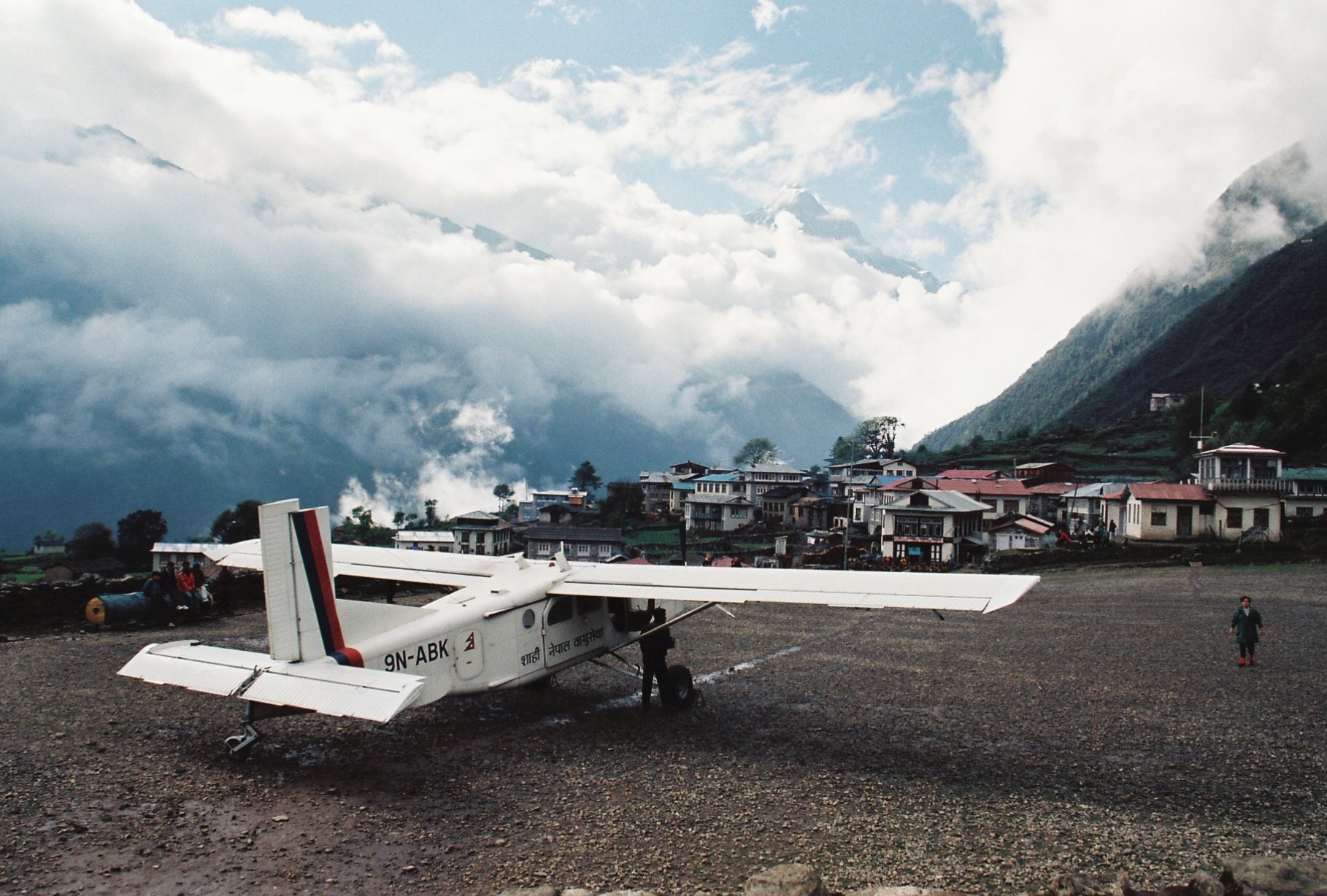
Twenty years ago if you had asked me where I was least likely to visit in my lifetime, I would have had to say the Himalayas. I had no reason to go, and it seemed far off the beaten track.
That’s why in January of 1998 I was unexpectedly drawn to an advertisement in a catalog for a trekking trip in the Himalayas around Everest Base Camp. Maybe I was intrigued by the chain of events that led to Everest's most deadly climbing season two years before, the subject of Jon Krakauer's book "Into Thin Air." In 1996, twelve people tragically perished trying to summit the world's highest peak, including two extremely experienced climbing veterans.
Suddenly obsessing with visiting this exotic region of the world, I decided I would become a hard core outdoors-woman. Who are we to question the universe’s plans? In April, we set out on a trekking expedition of a lifetime to the Khumbu region of Nepal, the gateway to Mt. Everest. Intensive physical training for high altitude would be required; we had a few months to prepare.
Getting to Kathmandu involved a series of long haul flights from LAX - 12 hours to Osaka, six to Bangkok with an eight-hour layover there, and then three more to Kathmandu. We had a few days in Nepal’s capital to get used to our new surroundings and recover from culture shock. You can read about some of my experiences in Kathmandu here.
@fairytalelife/one-way-trip-to-the-ganges
The real challenge came on a quick flight from Kathmandu that takes you into the lower altitudes of the Himalayas to a place called Lukla. This airport, unbeknownst to me, is considered the most dangerous airport in the world from a pilot’s perspective. Its approach is visual only. If it’s cloudy, you don’t land because Luka has no air traffic control tower.
Lukla - where the tradition of old school aviation lives on.
This arrival marks the beginning of our journey into the rugged realm of Sagarmatha National Park, home of Mt. Everest. Over the next ten days I had countless adventures that I will describe in forthcoming posts, but today's story begins at the end.
After those ten days, we found ourselves stumbling back into civilization, weary and soaked to the bone, where we would soon find ourselves caught in a rainy holding pattern. It was only when we arrived that we discovered we might be stuck in Lukla indefintely. Our next day’s flight was canceled. A series of weather patterns slammed into the mountains and no one could go anywhere.
On our first afternoon back in Lukla, we saw a preview of the effects unpredictable weather had on dozens of stranded travelers. They looked anxious and worn out. Is this what we had to look forward to?
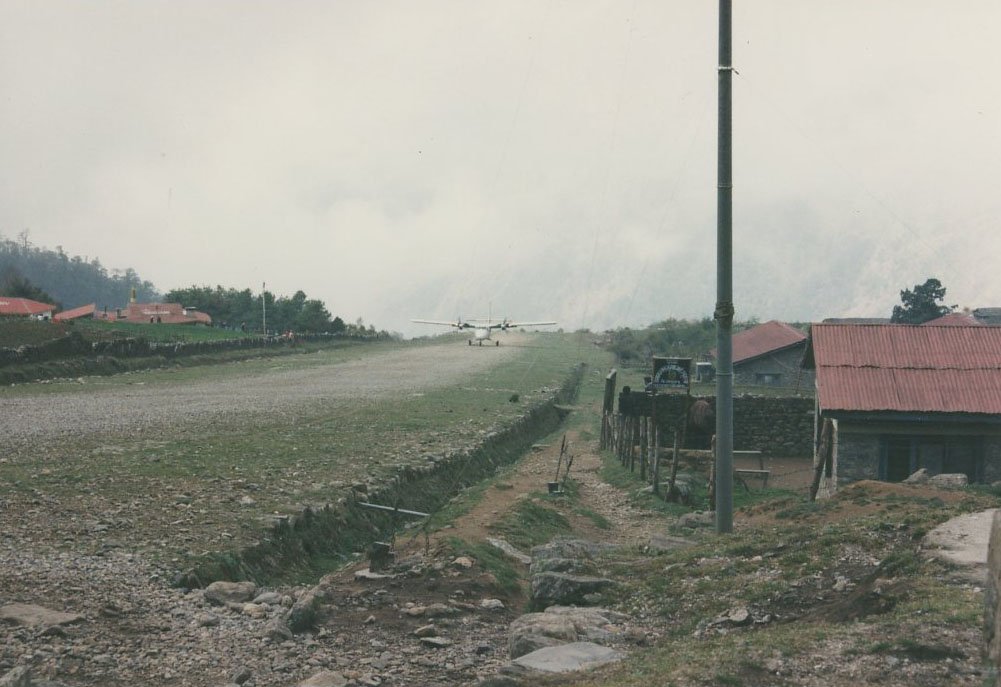
Last flight in
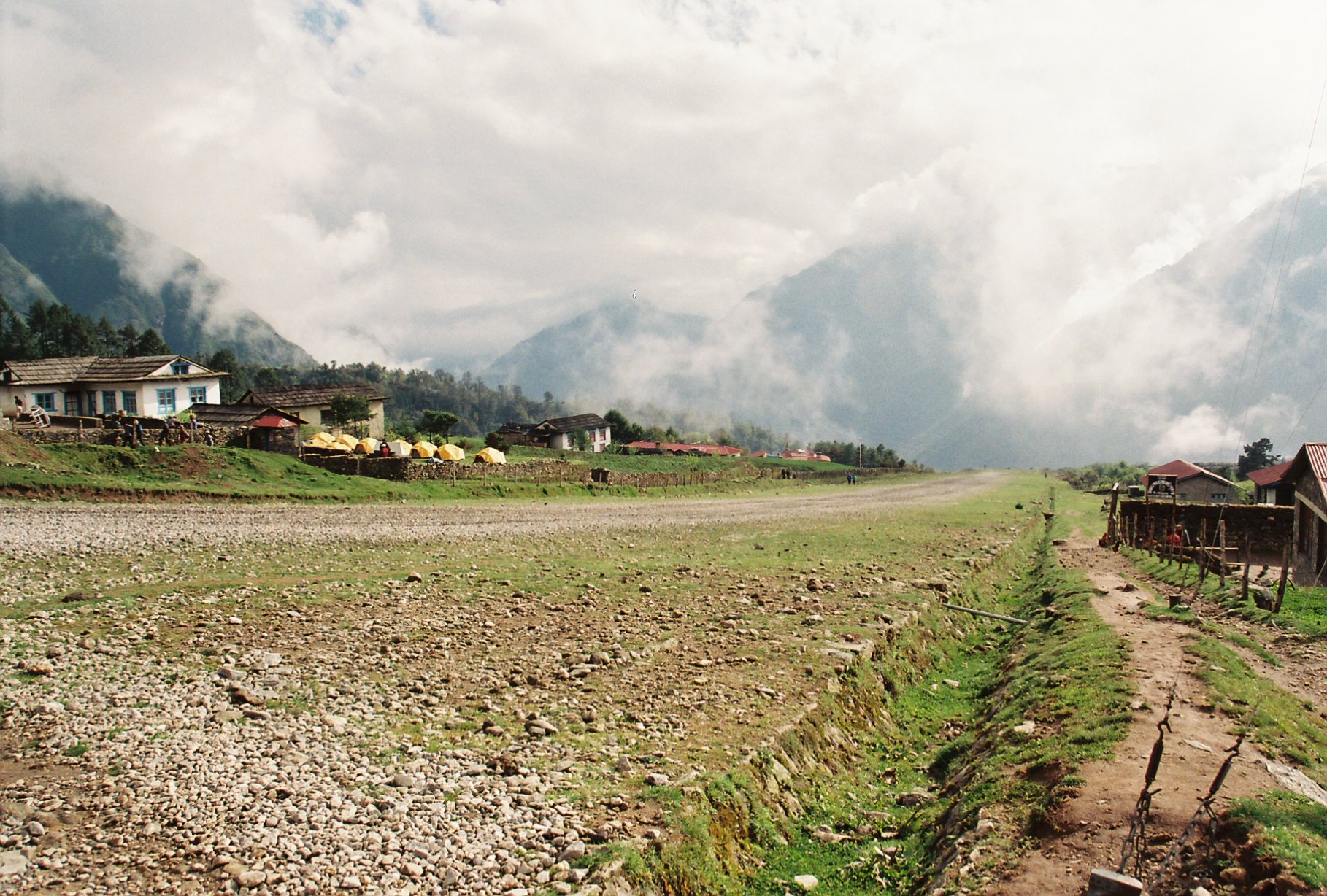
Trekkers camped out next to the runway waiting to leave - see all the yellow tents?
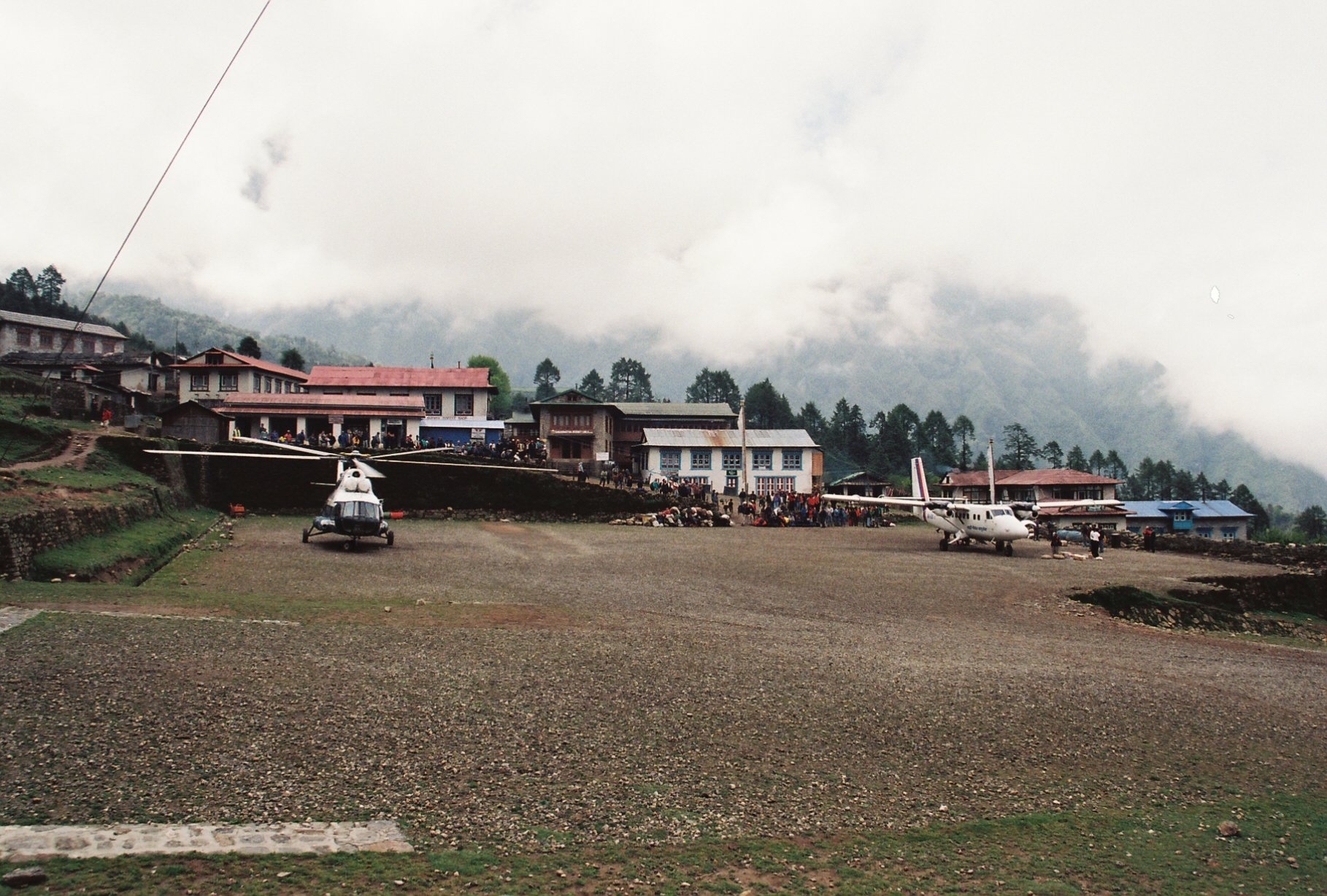
Everyone waiting
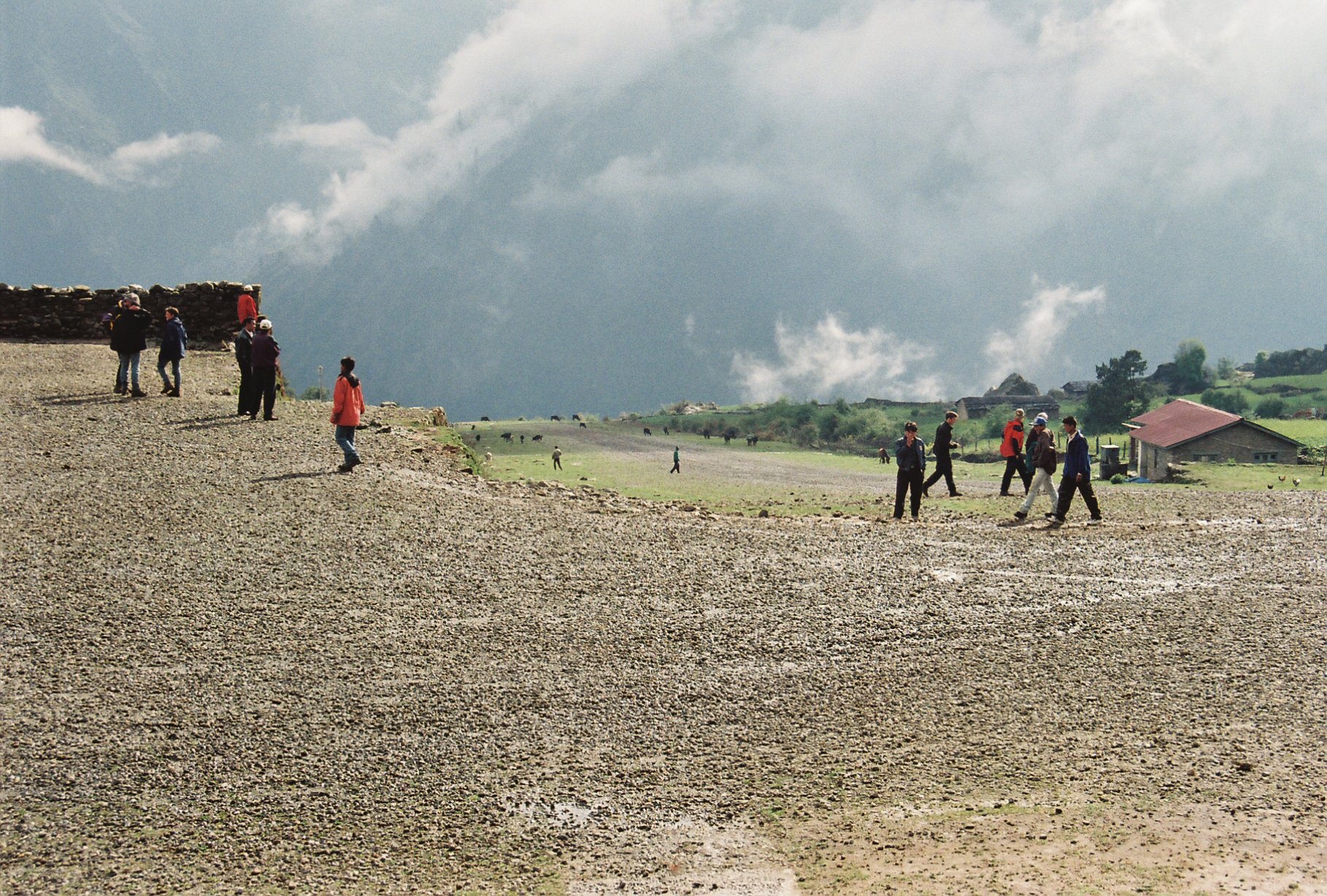
The calm before the storm. Look at that runway. It goes downhill (unpaved at the time)and makes a sheer drop, straight down
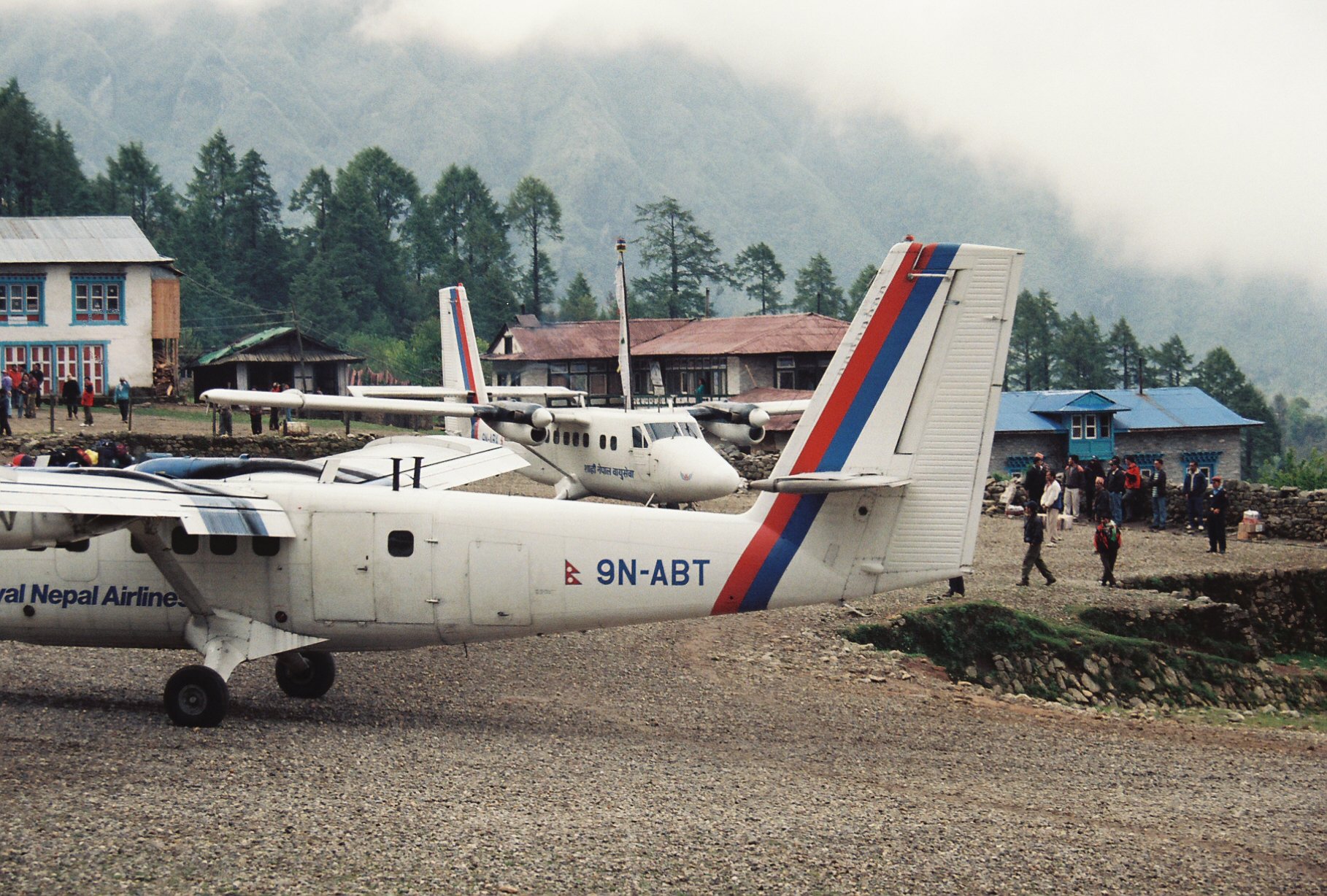
The last to get out - we weren't booked on these flights
As I mentioned, Lukla has no air traffic controller. Backed up departures caused traffic jams and bad tempers. No pilot was foolish enough to take off or fly into a cliff without visibility. Some people didn’t quite understand that and demanded immediate evacuation regardless of the weather conditions.
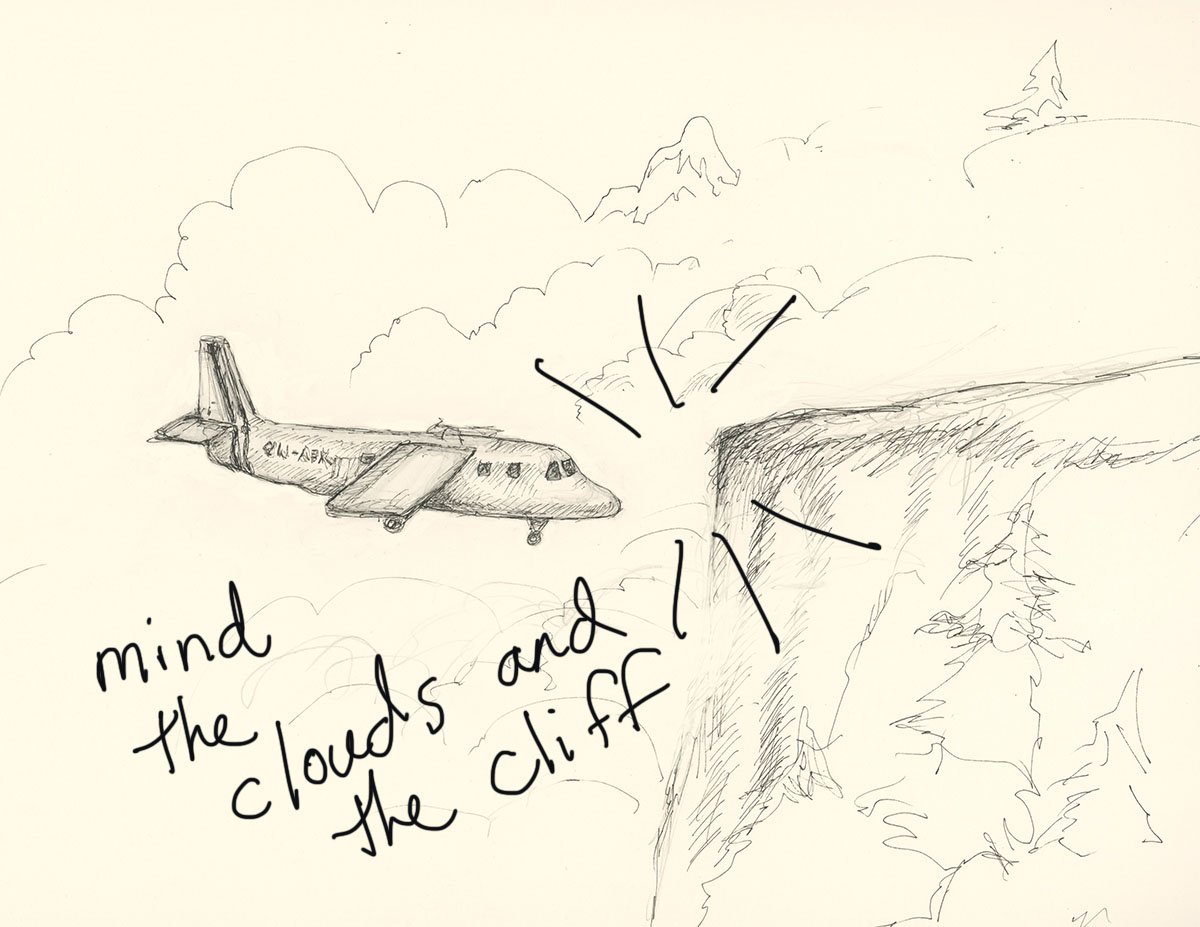
I think this was what happened in the last air disaster - a sketch I did to kill time
Everyone had connecting flights to make- our trek companions had a flight booked to Delhi from Kathmandu. Schedules were rigid, but all we could do was ride out the delays. We hung out in the lodge drinking hot tea wishing for nothing more than hot showers and a chance to do some laundry. This was the closest thing to civilization we had seen after 10 days and it felt great to stay put. I was used to squat “toilets” from the trek, but the porcelain cap over the hole at our accommodations in town seemed luxurious.
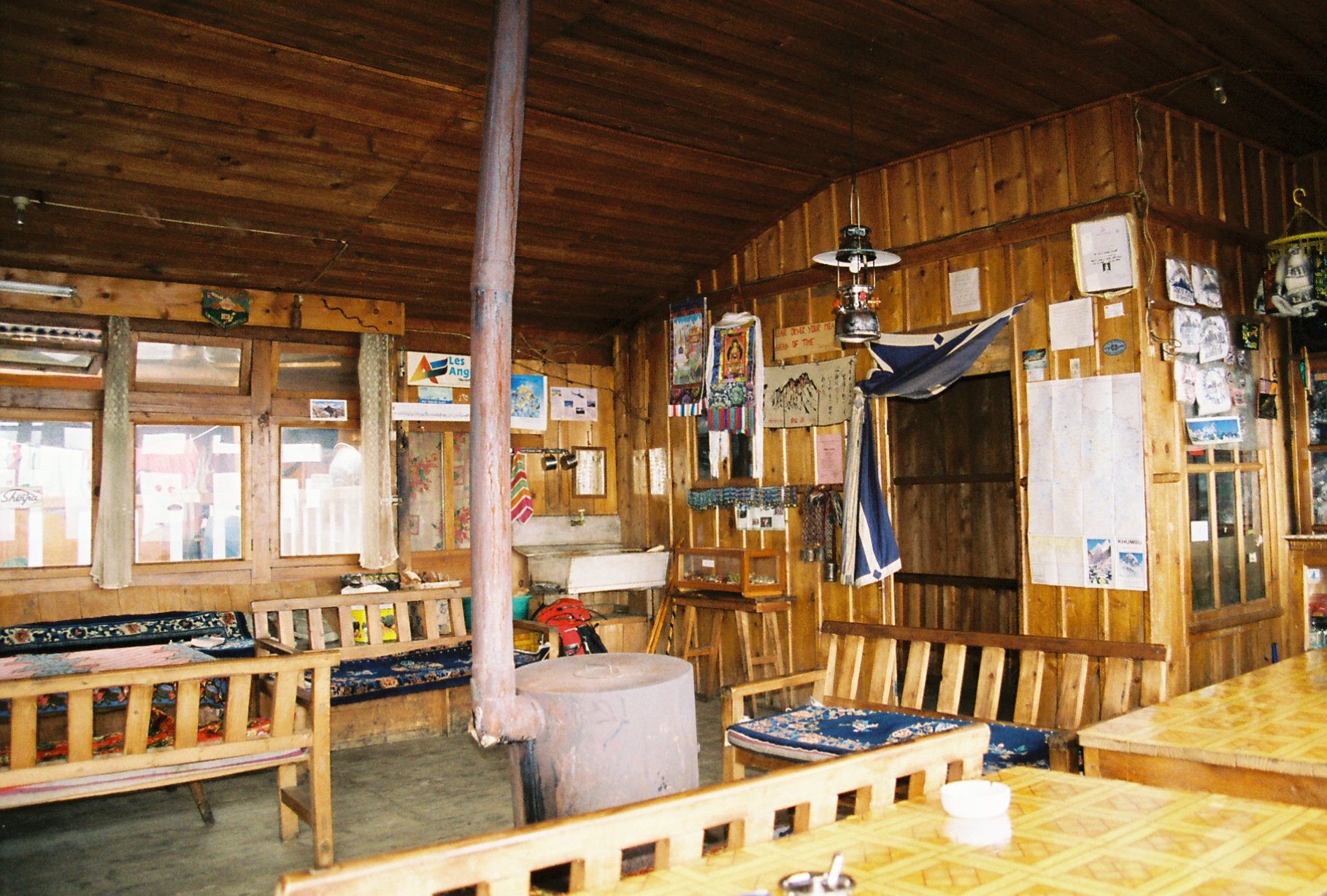
It was cozy in the lodge’s main room
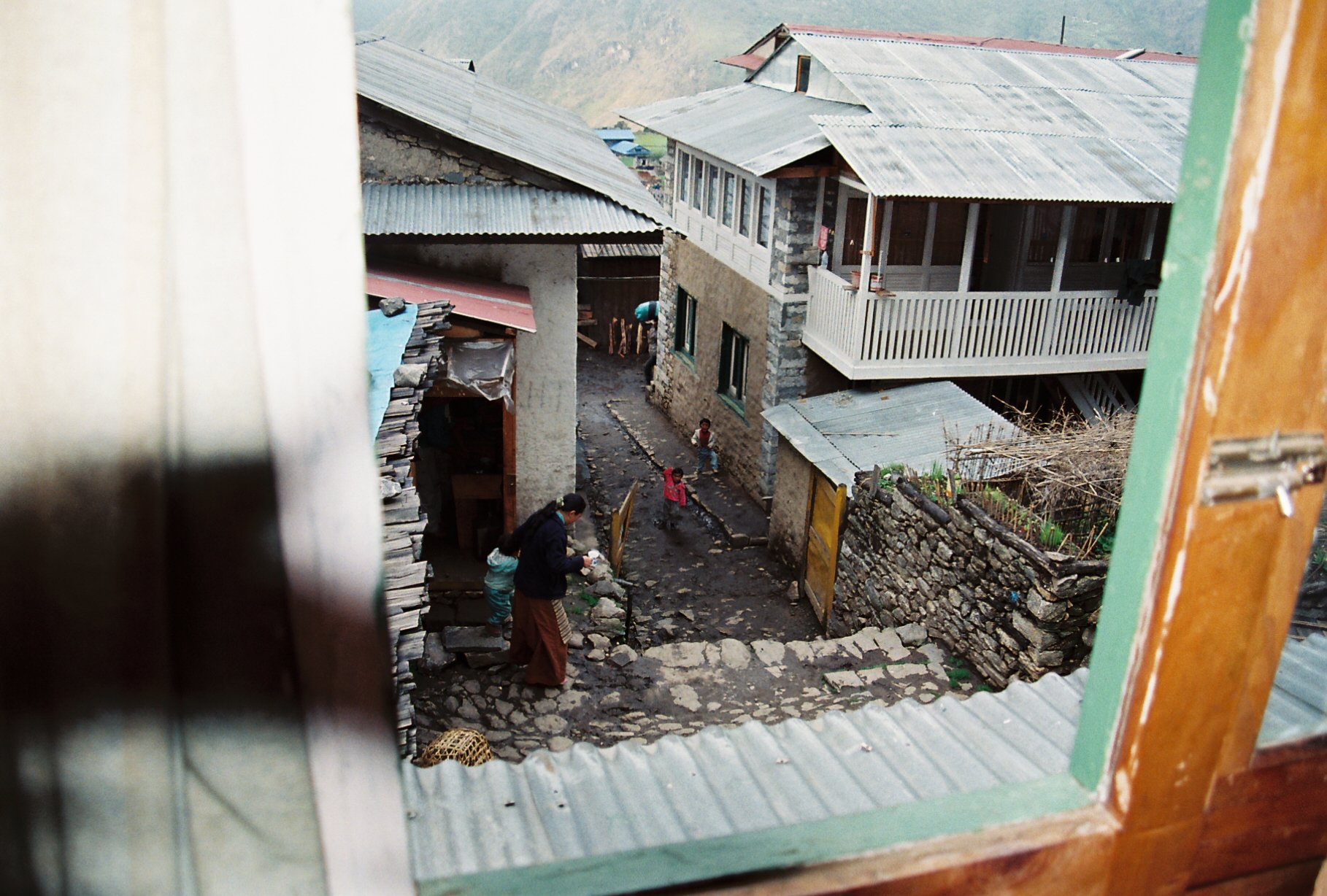
Our room with a view
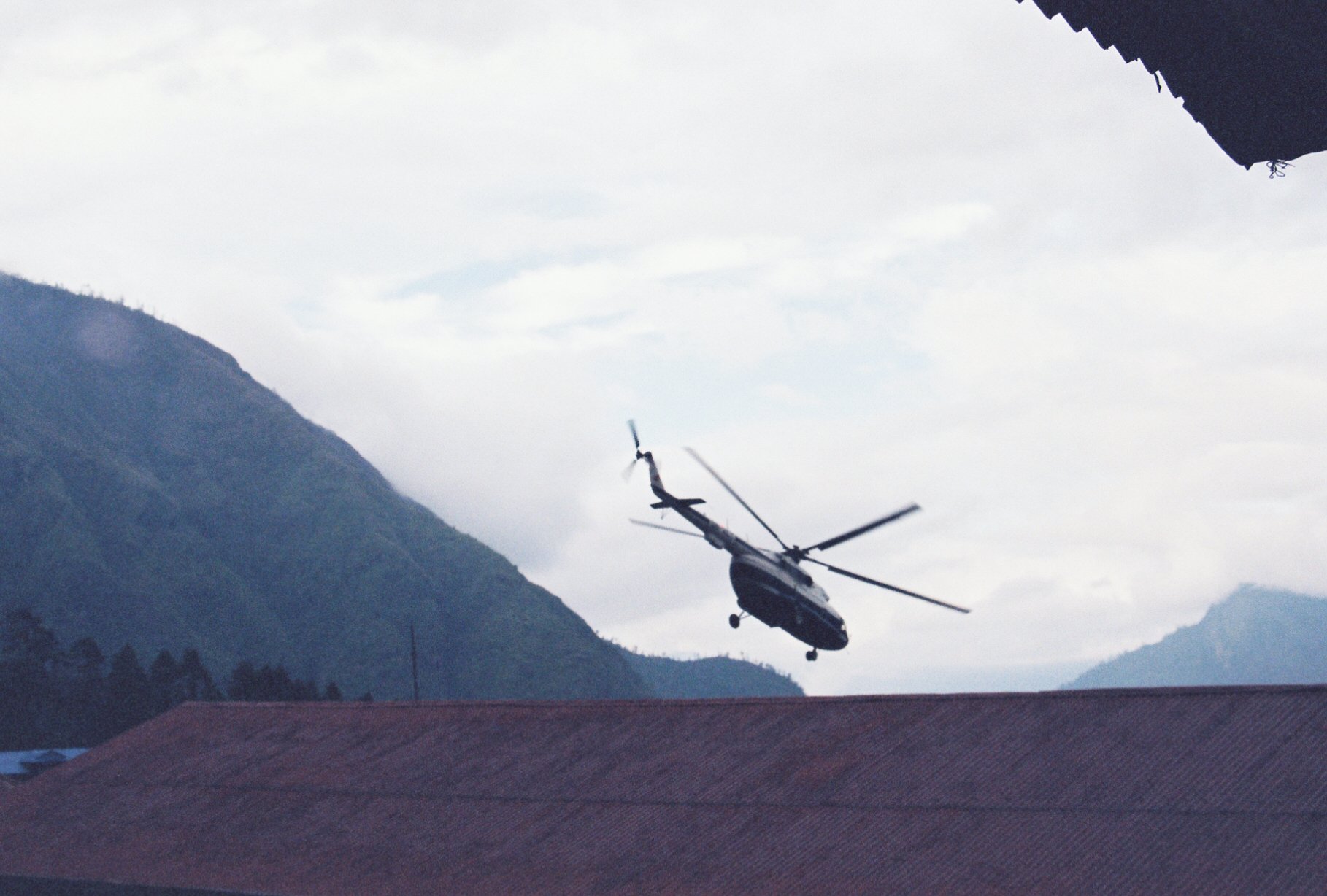
Some of the last few lucky souls that made it out in time – a view from our room at the lodge
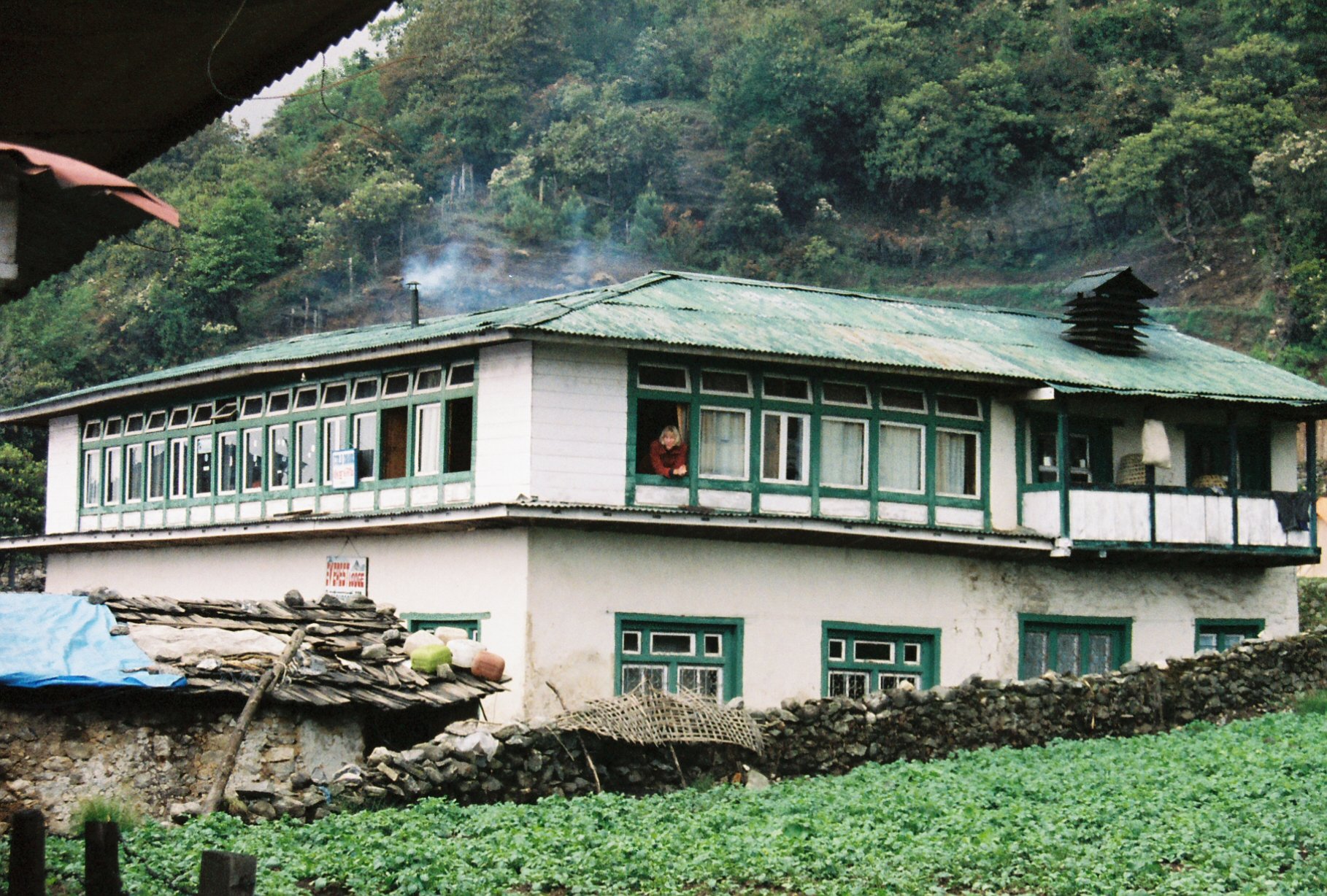
That's me up in our room accepting our fate
On our last night, our Sherpa guide Passang said he would ensure we had a feast. I passed him in the alley and he was talking to the cook who had two chickens under his arm about to become our dinner. Horrified, I begged him to reconsider. We were happy with our usual dal bhat – lentils and rice. I couldn’t stand the idea of chickens being murdered for our benefit. With a hearty laugh he let them go. I'm sure I earned the unfortunate label of the typical squeamish American woman. Maybe I had a spiritual awakening after feeling so close to death on the mountain. Who knows why - we didn’t want any more sacrifices; we had all seen enough at this point.
The next day was cold and wet. No one was flying in or out and no one knew when the weather would clear. I remember one big Russian helicopter took a chance.
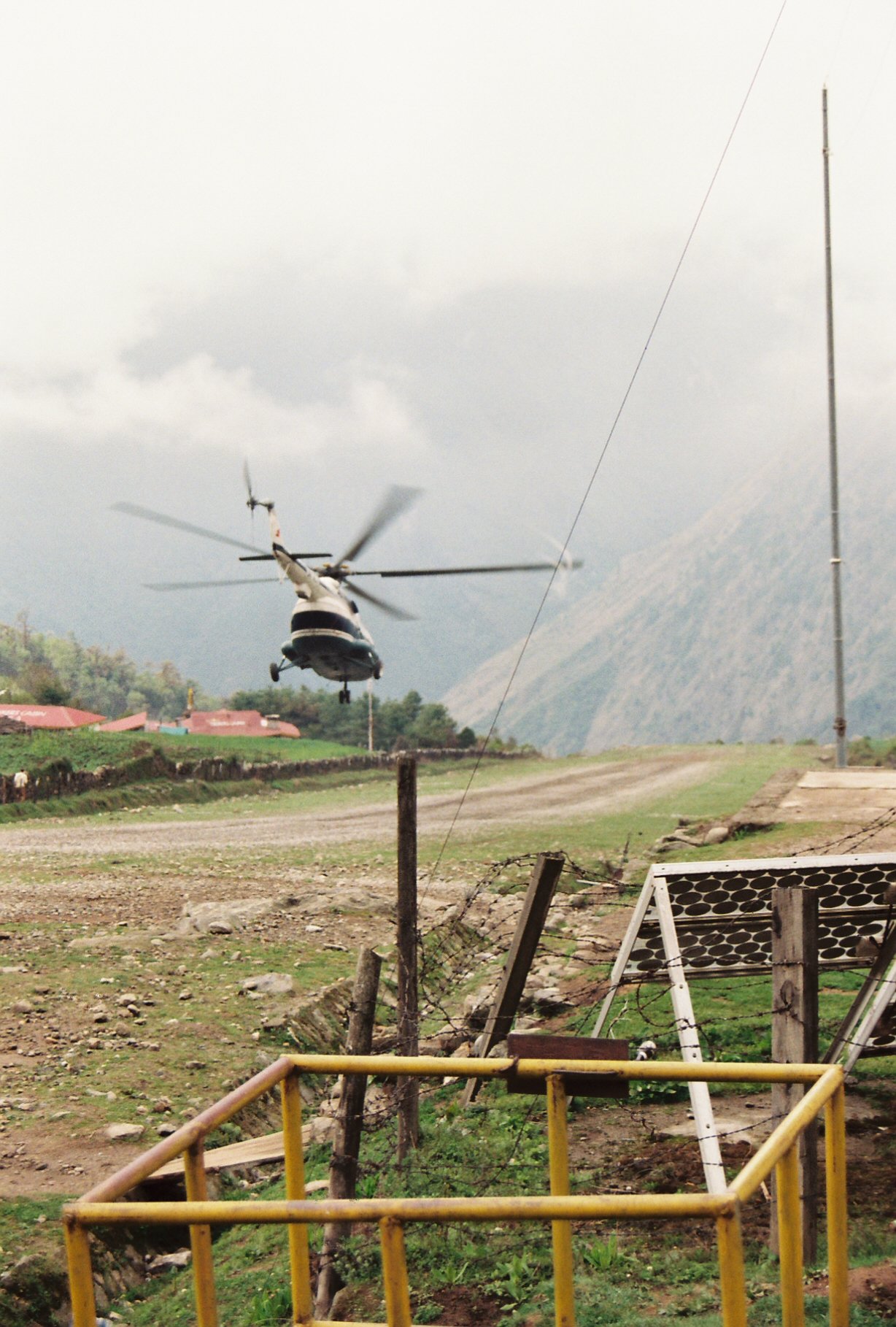
But no planes. Somehow Passang arranged for a private pilot from Kathmandu to come for us. We had to pay an additional $800 for that ride out, but we also had flight schedules. It was worth it and we all eagerly handed over our emergency funds. We had to leave one way or another, and this was our chance.
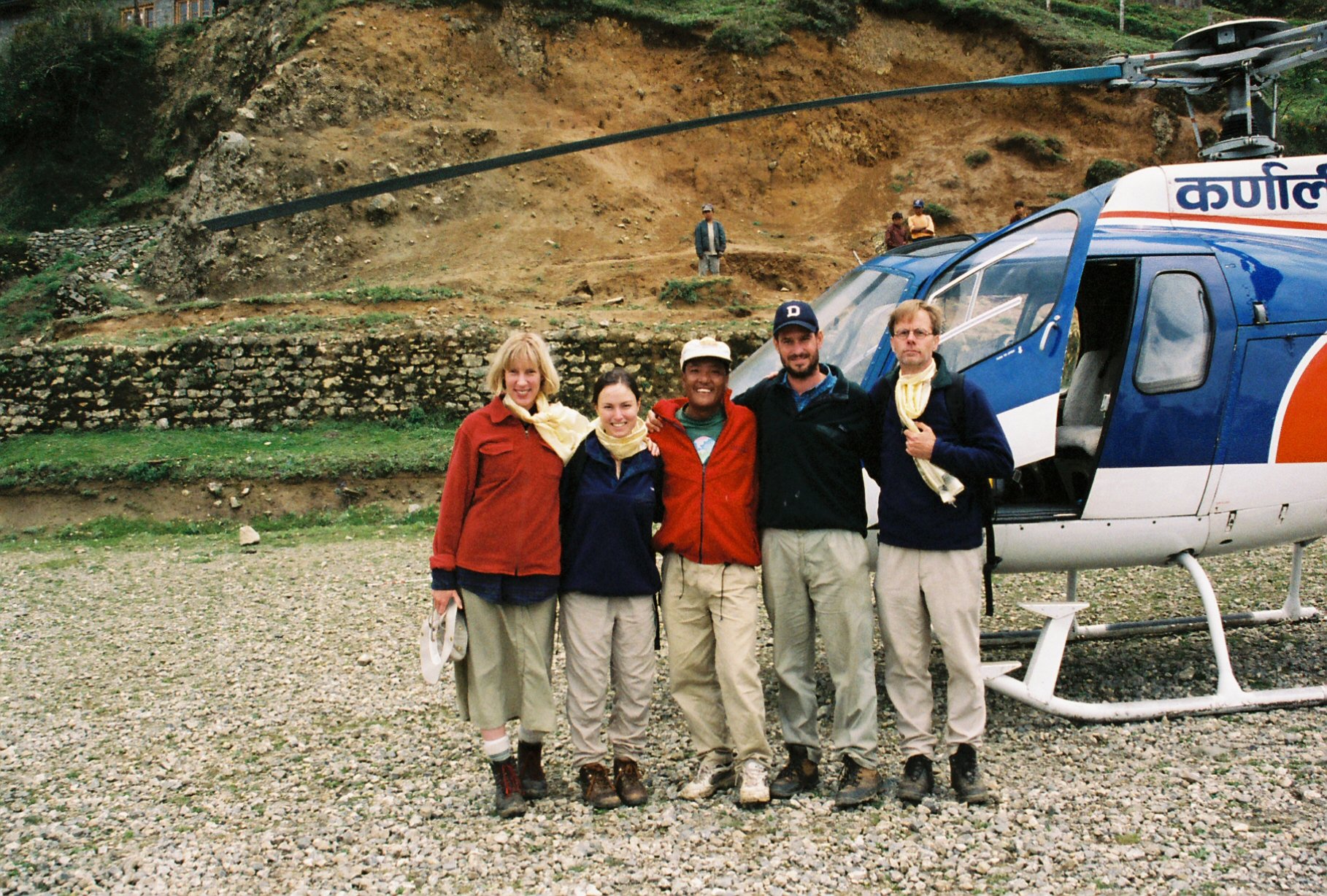
That's Passang Sherpa in the middle
I’d never been in a helicopter before. I am deathly afraid of heights - to me it's illogical that a little metal pod can fly like a hummingbird. Isn’t it incredible how we can rise to the occasion to do what is terrifying when we have no other choice?
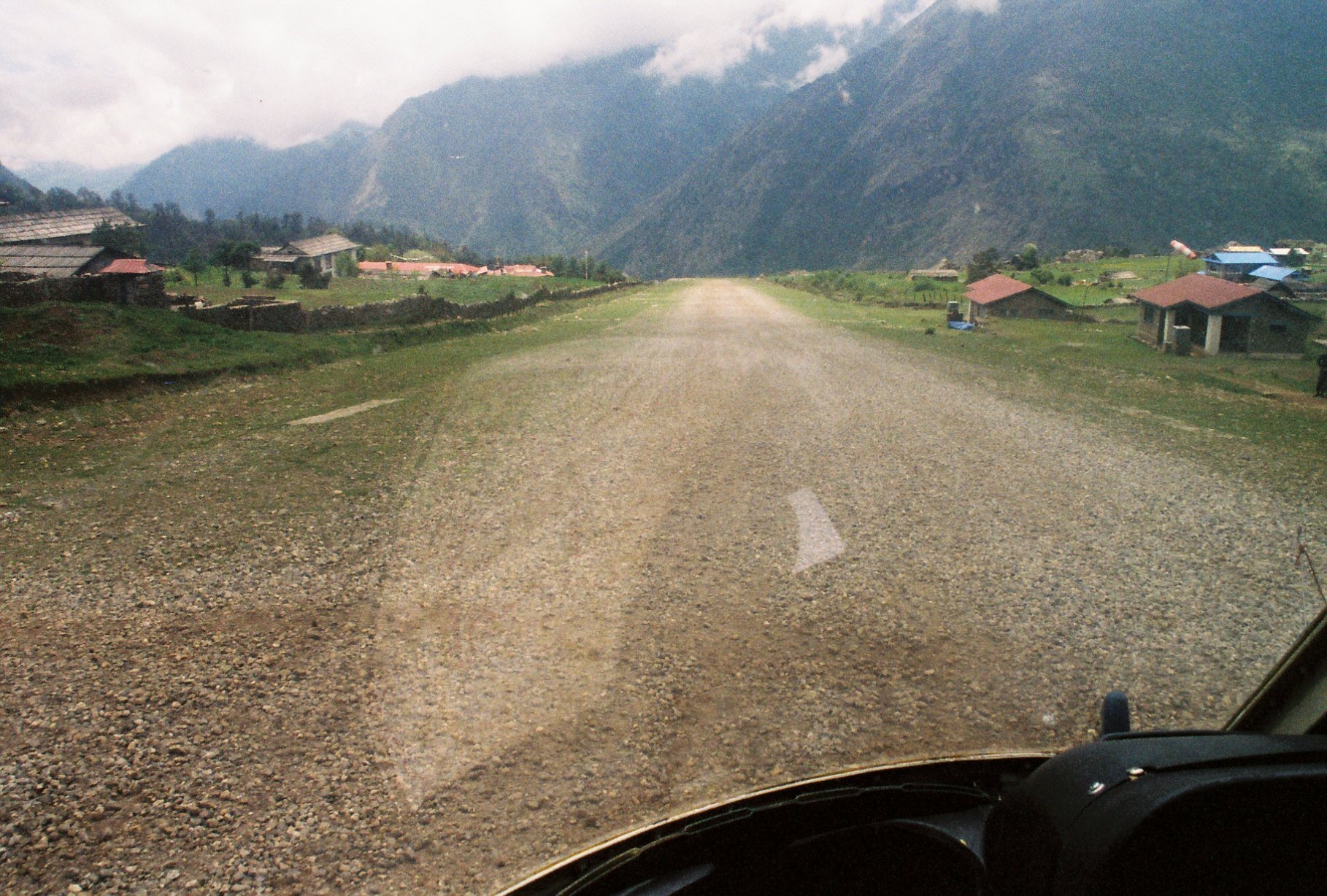
Here we go - confronting a runway
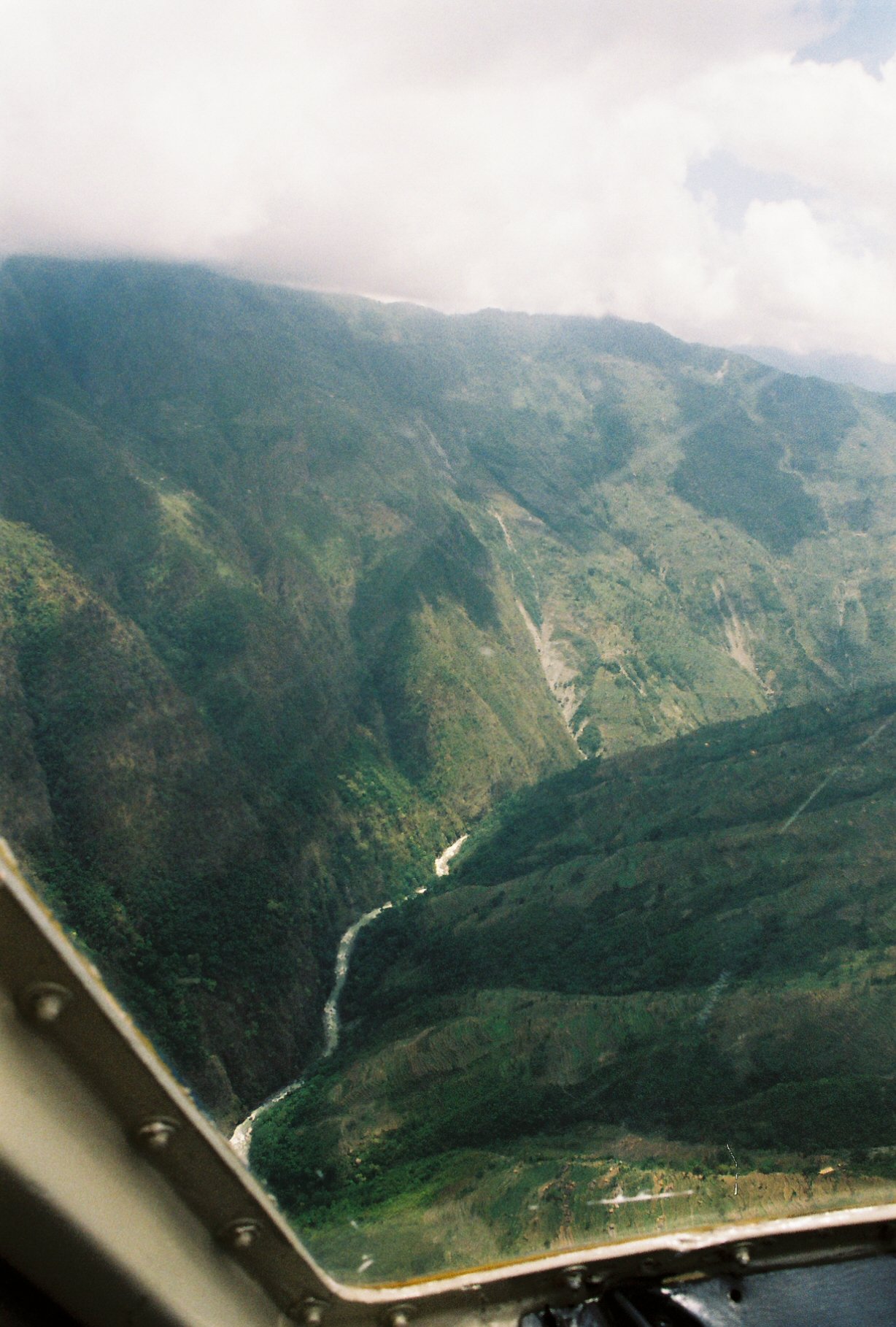
Don't look down - but you have to!
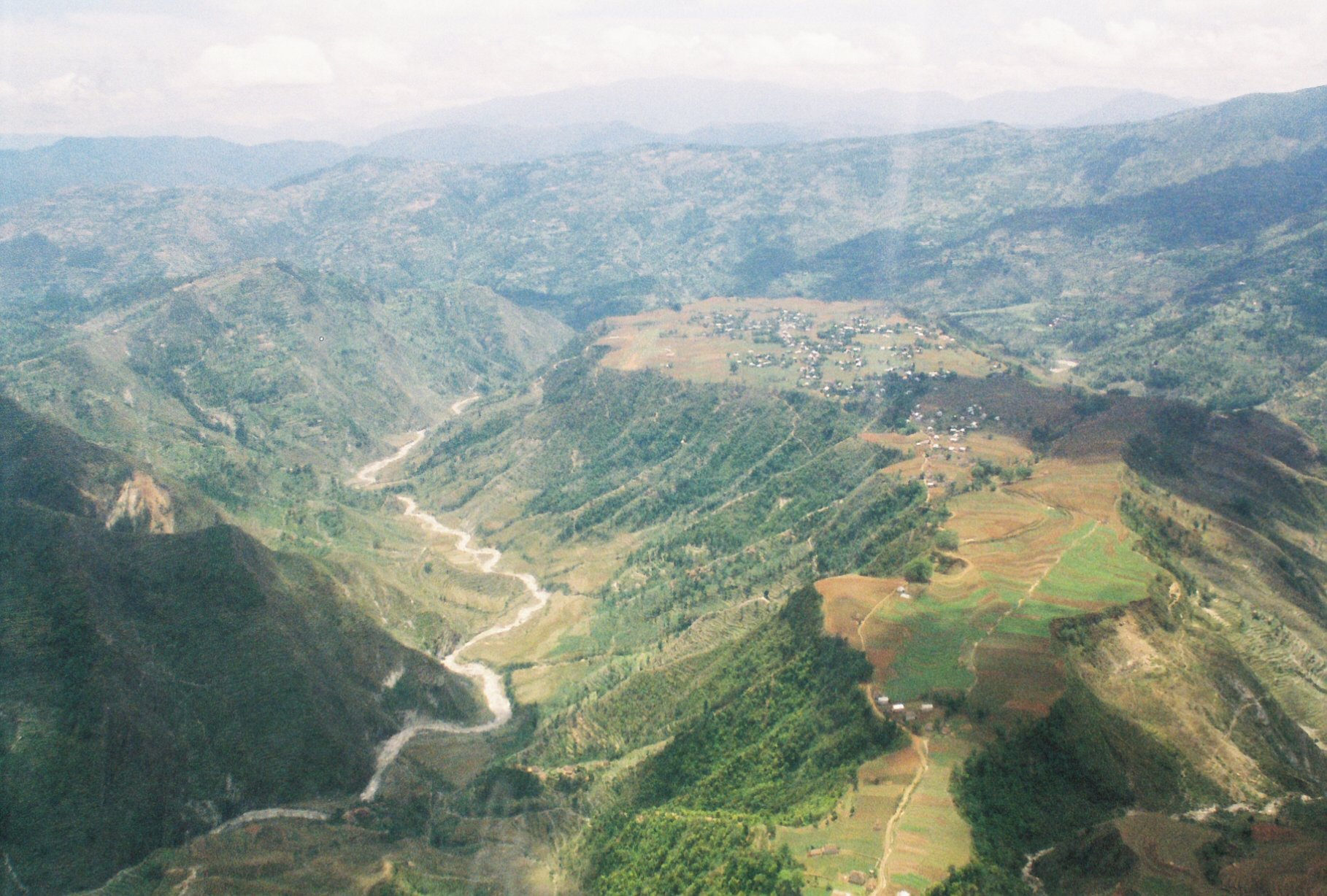
The terrain slowly changes as we descend
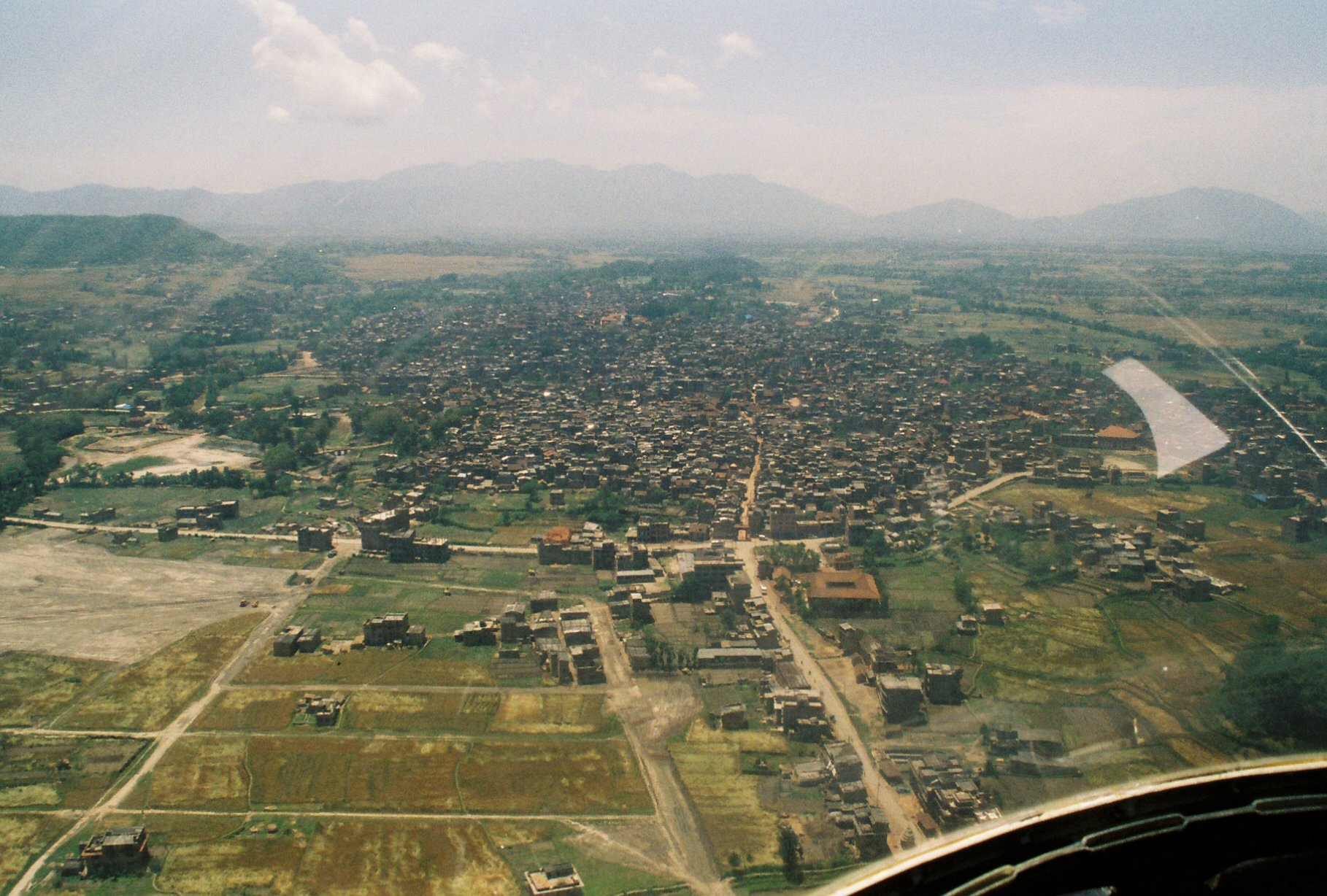
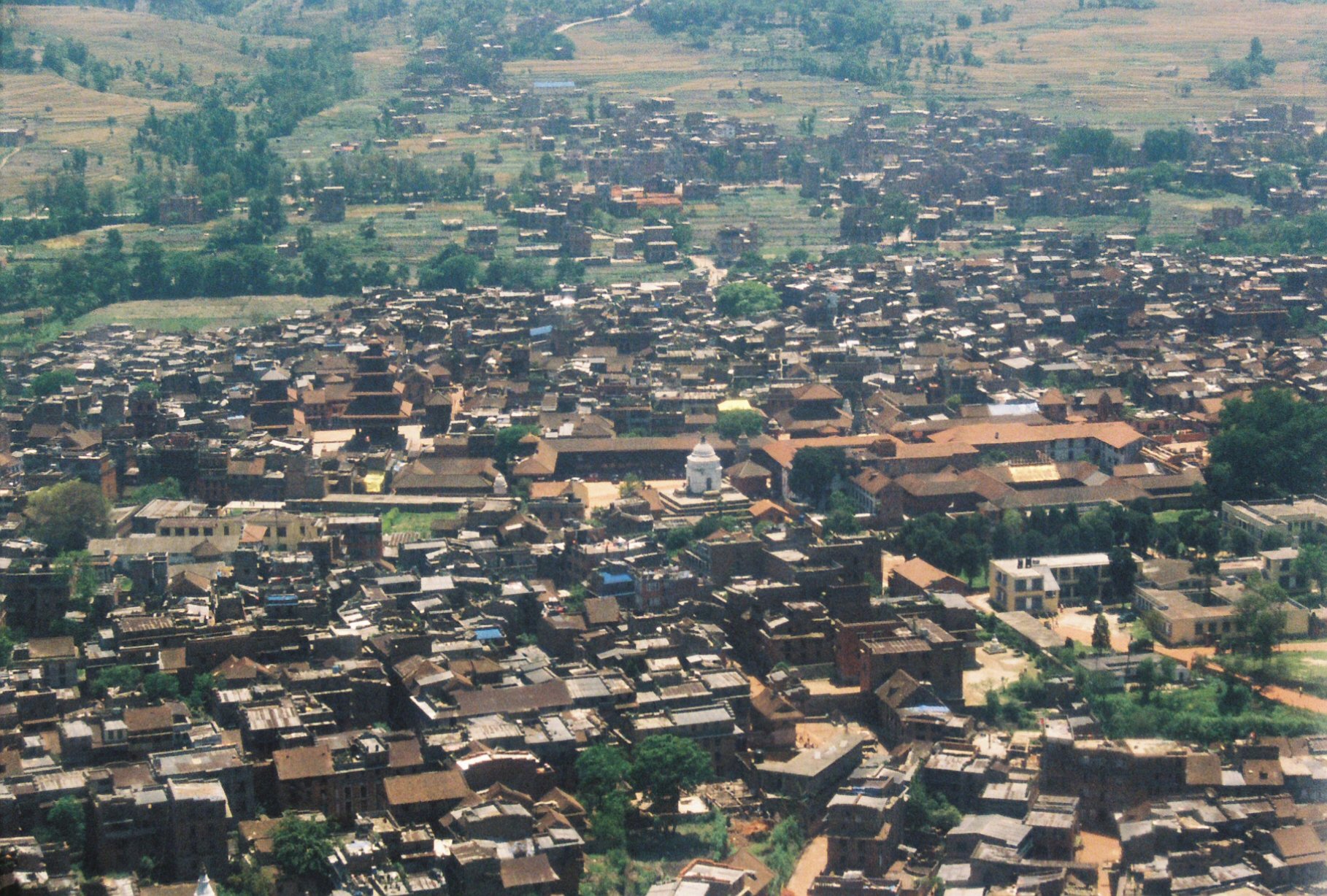
And back to Kathmandu
Maybe it had to do with those holy scarves we were wearing.
Stay tuned for that adventure.
